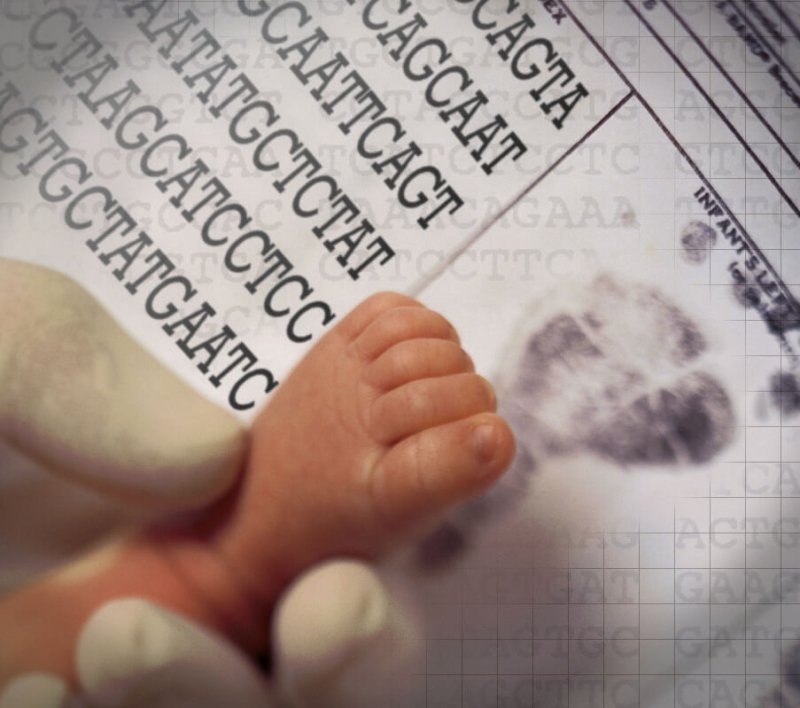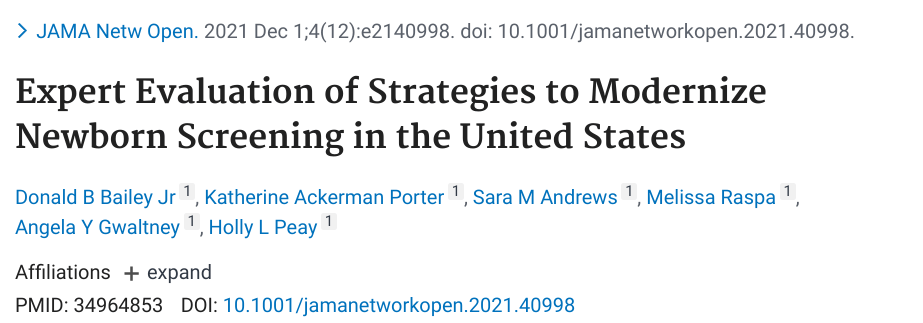Almost 50% of all the new drug approvals by the Food and Drug Administration targeted rare diseases, according to the most recent statistics, from 2020. Eleven years ago, only one in 4 new drugs targeted rare diseases. Total global expenditures on rare diseases therapies could reach $260 billion within two years.
The pace of research has accelerated in recent years because of the research revolution touched off by advances in gene editing, like CRISPR, and gene therapy. More than 60 cell and gene therapy FDA approvals are expected by 2030, according to the Massachusetts Institute of Technology’s New Drug Delivery Paradigms Initiative. They range from RNA-based drugs to gene therapies to fixes for pandemic-threatening viruses. Just this week, there was a report that the technology used to develop the mRNA covid-19 vaccines could be applied to deliver life-saving genetic material to the blood stem cells in the bone marrow of animals. If it’s successful on humans, mRNA-developed therapies could dramatically escalate our ability to fight all diseases, including rare ones.
Another driver is an increase in regulatory incentives and fast-tracked approvals. The Orphan Drug Tax Credit and R&D tax credit offset some of the investment costs, and the FDA’s priority review vouchers allow for more expedited drug reviews for rare disease treatments.
Detect, diagnose, treat
Rare diseases tend to strike the youngest. Clinicaltrials.gov hints at what’s to come.
CRISPR is tackling sickle cell disease and thalassemia, while antisense technology is being tried for Duchenne muscular dystrophy. Searching for “gene therapy” brings up 5000 hits for this older approach, many targeting childhood diseases.
Treatments work better if begun early, and some on the horizon will impact newborn screening. The goal is to detect signs of medical conditions that are treatable if recognized early, even before symptoms begin. All newborn screening findings must be followed up with diagnostic evidence, such as scans, biopsies, and further lab tests.
So the mantra is detect, diagnose, treat. And the waiting can be the hardest part, as test results confirm what screening suggests.
For years, newborn screening programs have improved and even saved the lives of the littlest. What the included diseases share is that they can be treated – perhaps stalled or cured with a one-time procedure, or controlled with daily or less frequent ways to address symptoms. An example of such an “actionable” condition is a severe combined immune deficiency, of which there are several types, often treatable with a bone marrow stem cell transplant.
To get ahead of the expected influx of “transformative treatments,” Donald B. Bailey, Jr, PhD, and colleagues from RTI International in Research Triangle Park, North Carolina, queried newborn screening experts from clinical research, federal or state advisory boards, patient advocacy groups, industry, and state testing laboratories. Their findings, which will help to guide preparation for expanding the newborn “blood spot” panels, appear in JAMA Network Open.
Gearing up to expand newborn screening
Screening a few drops of blood from a newborn’s heel for inklings of serious diseases that can be treated before symptoms arise isn’t a new practice – it began in the 1960s with a single condition, PKU. The devastating effects on the brain are preventable with a highly specialized medical diet begun as soon as possible, which counteracts the inborn error of metabolism.
Today newborn screening programs in the U.S. check for dozens of diseases, but in a state-by-state manner. That means that a newborn in one state would receive treatment while another with the same condition in a different state would not – but the situation is improving as state lists grow.
Still, the pace of adding new conditions to newborn screening panels has been historically slow, because developing and evaluating new treatments takes a long time. But with a host of biotech approaches finally reaching the clinic, how will newborn screening panels keep up?
The online survey asked respondents to rate 20 potential solutions for modernizing newborn screening to handle “an onslaught of new and more effective therapies” that “will constitute a disruptive event for which newborn screening is unprepared,” according to the researchers. Modernization of the entire screening system seems unavoidable, but how should it happen?
The 40 respondents agreed on priorities:
- Coordinate testing among states
- Establish larger-scale regional screening networks
- Align federal programs that deal with newborn screening
- Expand funding for research, especially to build clinical databases that link mutations with diseases
- Follow long-term outcomes of treatments
The report looked at newborn screening going forward, but the practice has a rich history. Here’s a deeper dive.
Probing dried blood spots
In the excitement leading up to birth, new parents may be so overwhelmed that signing the informed consent form for taking a tiny blood sample from the newborn’s heel may go unnoticed. The blood spot is dried and then probed using a technique borrowed from analytical chemistry called mass spectroscopy. It looks for telltale molecules that could indicate specific inborn errors of metabolism. Too much or too little of a particular enzyme or other protein is the first step in what those in the rare disease community term “the diagnostic odyssey.”
DNA is also extracted from the blood spot and tested for a handful of single-gene conditions. They range from the familiar, such as cystic fibrosis and sickle cell disease, to the graphic, like maple syrup urine disease, to the unpronounceable, like long-chain L-3 hydroxyacyl-CoA dehydrogenase deficiency.
Before drying, blood is also analyzed for its cells. For example, too few T cells could indicate an immune deficiency before the child has a chance to contract infections, which would lead to a diagnosis.

The Department of Health and Human Services recommends that states screen for 35 “core conditions,” called the Recommended Uniform Screening Panel or RUSP. Twenty-six “secondary conditions” are listed too, which states are adding little by little. The recommendations are not mandates.
Spinal muscular atrophy – a closer look
The state-by-state nature of the newborn screening disease list means that inequities arise – a child who would be treated early if born in one state wouldn’t be diagnosed in another until symptoms appeared, which could take years. Spinal muscular atrophy (SMA), provides a compelling and disturbing example.
SMA is devastating, damaging the motor neurons in the spinal cord. The child is extremely weak, with “floppy” muscles that eventually restrict breathing. SMA is the most prevalent genetic cause of infant mortality, affecting 1 in 10,000 newborns in the US. One in 50 people are carriers. It is the second most common single-gene disease of children after cystic fibrosis.
Babies with SMA typically don’t live beyond two years, although I visited a hospice patient with the disease who was 7 – she was on a respirator and feeding tube, and couldn’t move or respond. I read to her. At the other end of the severity spectrum are the fetuses that barely move and, if born, are floppy and blue and only live a few days.
Three treatments have become available for SMA since 2016. The first, the drug Spinraza, takes advantage of a peculiarity of the disease – the mutant gene has a silenced copy right next to it on its chromosome. Spinraza injected into the spinal cord has an “antisense” function, binding to the echo gene and enabling it to instruct the cell to produce the missing protein.
The second SMA drug, Zolgensma, a gene therapy, and the third, an oral drug, Evrysdi, were approved in 2019. Evrysdi alters how parts of the echo gene are cut and pasted to reconstitute the instructions to make the needed protein. Jocelyn Kaiser wrote a compelling article in Science about 3-year-old Evelyn, who received a gene therapy treatment at 8 weeks old that gave her body a crucial missing protein.. Three years later she was dancing around her living room to the song “Happy.” Evelyn’s older sister had died of SMA at 15 months.

Newborn screening panels added SMA caused by a specific mutation that removes part of the gene (SMN1) in July 2018. “Within three years of spinal muscular atrophy (SMA) being added to the federally recommended list of diseases to screen for at birth, Cure SMA is celebrating a significant milestone—85 percent of newborns in the U.S. are now screened for SMA, the leading genetic cause of infant death,” according to a statement from Cure SMA in June 2021.
The organization’s website has a map showing 17 states that still don’t screen for SMA, but several of those have recently come on board. Holdouts include Oregon and Alabama.
Mary Schroth, Chief Medical Officer for Cure SMA, said, “It is abundantly clear, when we identify and treat SMA, often pre-symptomatically, that we can dramatically improve a baby’s breathing, muscle control, and ability to move independently. Early screening is life-saving.”
Will we see “newborn screening hesitancy?”
Expanding newborn screening may seem a surmountable challenge when the focus is on a single disease with a happy ending, such as SMA, which comes with its own gene copy to manipulate. Treating many other conditions isn’t as straightforward. Even if they are, the “natural history” studies that must accompany evaluation of new therapies take years, to assess the extent to which the therapy helps.
Another problem is that for extremely rare diseases, it’s difficult to find enough patients to participate in a clinical trial. That’s why trials of just one person are permitted and have for years been dubbed “n-of-1.” NIH recently rebranded “n-of-1” as “bespoke.”
These complexities of evaluating new treatments might explain the negative consensus of the respondents to the new survey:
There was little optimism among participants that 30 new disorders could be added to the RUSP (Recommended Uniform Screening Panel) by 2030 or that states could add 30 within 3 years of RUSP approval.
But another challenge that the respondents might not have seen coming is newborn screening hesitancy. If millions of people can refuse a vaccine that could prevent the torturous deaths from COVID, who’s to say that many parents won’t refuse the taking of a drop of blood from their baby’s heel that could prevent a slew of diseases?
Newborn screening hesitancy can happen – in fact it already has. I assign my bioethics students an article in Nature, “A spot of trouble,” by Mary Carmichael, from 2011. She wrote about an activist new mom who feared that the US government was nefariously collecting the DNA of the tiniest Americans.
I ask my students,
If parents refuse newborn screening and their child is later diagnosed with a condition that could have been prevented or managed if it had been detected with a blood spot, should they be held accountable in any way?
How is this scenario different from the unvaccinated who used up critical resources in hospitals during the height of COVID? Shouldn’t they, too, be accountable if they chose not to do all they could to prevent contracting the coronavirus?
Perhaps this skepticism about vaccines will pass and future new parents will not only support but recognize the value of expanded newborn screening.
Ricki Lewis has a PhD in genetics and is a science writer and author of several human genetics books. She is an adjunct professor for the Alden March Bioethics Institute at Albany Medical College. Follow her at her website or Twitter @rickilewis
This is an updated version of an article that first appeared on the GLP on January 25, 2022.
































